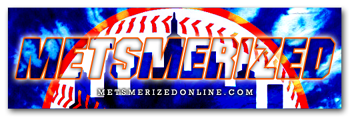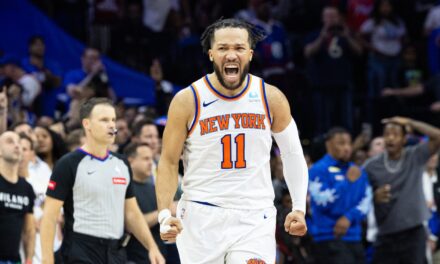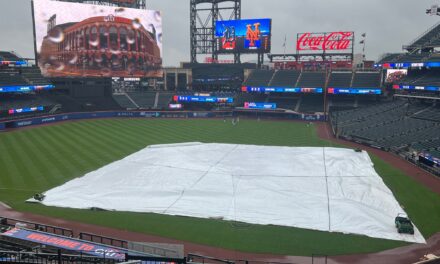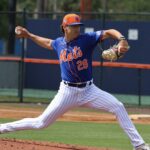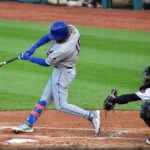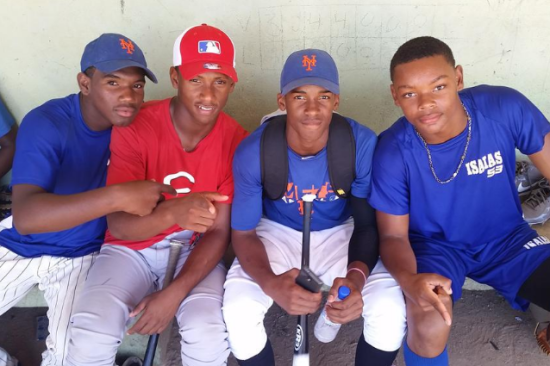
Today marks another holiday in amateur player acquirement if you haven’t heard. On July 2nd of every year, a signing period exists where amateur baseball players outside of the United States, Puerto Rico, and Canada between the ages 16 and 23 are signed to professional contracts with teams in the MLB that range from 4 to 8 figure contracts, depending on the age, talent, and availability.
Players represent the Dominican Republic, Venezuela, Panama, Colombia, Cuba, as well as less likely places like Italy, Australia, Germany, and this year, France.
According to the new rules from the 2012 Collective Bargaining Agreement, each team is assigned a pool of money in the seven figure range that is available to sign contracts with eligible players within the signing period that lasts from July 2nd, 2015 to June 15th, 2016.
The pools are assigned by record, in a similar sense to what the MLB draft does, with the team that has the worst record having the largest amount of money to spend. However, a team can go over their pool if they choose to sign players to contracts, but will incur large penalties, such as:
- Any money over the sum of the pool will be taxed 100 percent.
- In addition any team over 5-10% of their pool cannot sign individual players in the next signing period for more than $500,000.
- If 10-15%, the team cannot sign a player for more than $300,000 in the next signing period.
- If more than 15% the team cannot sign a player for more than $300,000 for the next two signing periods.
While these penalties are pretty steep, a team can trade for up to 150% of their allotted pool with another team to gain more money, and keep themselves out of penalties and able to spend big in the next signing period as well. Also, any signing bonuses under $10,000 are not counted towards the pool.
A majority of those that signed are trained by someone who acts as their teacher, mentor, and agent. Teams get to know the trainers and are afforded time to scout the players. Then front offices decide if the bonus demands are worth it for each player. The trainers get a cut for themselves, but the players usually get the majority of the money. Teams and players usually have deals in place 6-12 months ahead of the period, so that’s bad news if you were expecting anyone that wasn’t linked to your team.
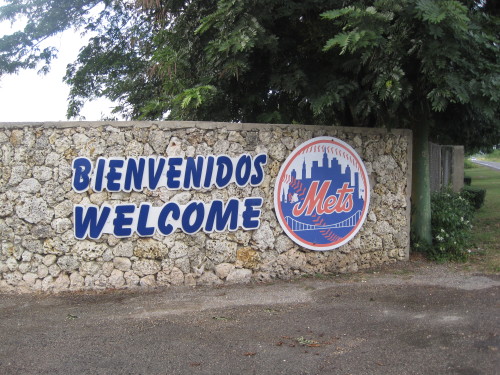
Mets Signing period:
For this new signing period, the Mets have a bonus pool of $2,531,300, but have two deals in place that put them over the top by at $168,700 so far: Andres Gimenez and Gregory Guerrero
SS Gregory Guerrero B/T: R/R, Hometown: Nizao, Dominican Republic
Rankings:
Baseball America 6/30
MLB.com 17/30
Fangraphs 9/47
Shortstop Gregory Guerrero is the nephew of Former All-Star Vladimir Guerrero, and trained at the Guerrero Baseball Acadamy. While his cousin, Vlad Jr is has the spotlight in the Guerrero family due to his power and direct bloodlines, Greg is no slouch either.
A guy who is considered advanced for the Dominican class, Guerrero has an above average hit tool, and while he focuses on line drives, projects for above average to possibly plus power. As for defense, be might stick at shortstop due to his above average arm and fielding, but 3rd base would be a more likely home for him, due to below-average foot speed.
He signs with the Mets early this morning for $1.5 million dollars, which is the second highest bonus Mets have given to an amateur. He will train at the Mets Dominican Academy for the rest of this year.
SS Andres Gimenez B/T L/R Barquisimeto, Venezuela
Rankings:
Baseball America 2/30
MLB.com 15/30
Fangraphs 6/47
Mentioned less than Guerrero, but higher-ranked, Andres Gimenez was snagged early in the signing period by the Mets for a lower price than the Dominicans ranked before and after him.
Gimenez is one of the most advanced bats in the Latin American class, with contact potential rating plus. Baseball America says he could possibly hit .300 annually, with fringe-average power that could reach double-digits in homers, with quite a few doubles. In addition to that, he has above-average speed, and a chance to stick at shortstop and be an above average defender. He signed for 1.2 million dollars this morning.
These are the two headliners, but I expect more will be reported later today that aren’t in the millions. These two signings will make the Mets over pool however as stated previously, they can trade for up to $3,796,950 in pool space to avoid the penalties and participate in the 2016-2017 IFA signing period.
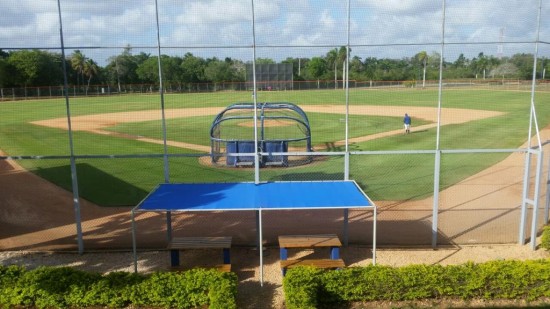
Some questions you may have…
16? Talk about robbing the cradle!
Yeah, could you believe it? Children, who won’t be able to drink alcohol legally in the United States until 2020 are being signed to contracts worth 4-7 figures. However, before 1984 when the the age rule was imposed, known as the “Jimy Kelly” Rule, there was no age regulaton.
Jimy Kelly was a Dominican Shortstop who was signed at the age of 13 by the Blue Jays in early 1984, which inspired the rule, with MLB saying they were eliminating Child Labor after he signed.
Kelly never made it very far with the Jays, and instead burned out by 19, He couldn’t take the pressure at a young age, and wasn’t able to mature, either. He faded out of the record books, many kids from Latin America do unfortunately…
While 16 is still young, and signing players at that age doesn’t seem to give kids the opportunity to graduate High School, people have to understand, that Venezuela and the Dominican Republic are two countries that aren’t America, and school is not legally imposed in either country, nor very effective in the more common low-income neighborhoods, if at all.
Both countries are in poverty, are completely corrupt, do not have mandatory educational systems, and Venezuela is especially dangerous on top of it. Furthermore, a majority of the kids aren’t concerned about their education, and instead are trying to put their mother and family in a home, and food on the table.
While thinking that this could be “exploitation”, think about the fact that trainers take in a lot of these kids and give them homes, food, and the ability to house and feed their family based on their physical gifts. Academies like Guerrero’s, also enroll their children into schooling for money management, english, geography, and other skills. Some professional organizations, like our Mets give further opportunities for education, when players are at the academy, as well as english classes, and at least while Omar Minaya was involved, their education was paid for by the team.
Why no Vlad (Jr.)? I’m Sad!
While the Mets aren’t signing Top International prospect Vlad Guerrero Jr, they were hot after him, and there was serious mutual interest. However, the Blue Jays used their entire pool and then some to blow the Mets’ offer out of the water, and it was something Vlad couldn’t refuse. However, Gregory and Andres are both more advanced bats when it comes to contact, and neither are mere consolation prizes as players.
Why is Andres Gimenez rated higher than Guerrero but receiving less?
Gimenez is from Venezuela, where it is harder to access him due to Venezuela’s complete and utter turmoil, and US’s sanctions against Venezuela makes it harder for scouts to travel to Venezuela. That lowers the cost, In addition, families usually take lower cost deals that are guaranteed and early to get money and leave Venezuela.
Highest Amateur IFA Bonuses in Mets’ History Prior to this Signing Period
1. SS Amed Rosario – $1,750,000 (2012-13)
2. OF Fernando Martinez – $1,400,000 (2005-06)
3. LHP Juan Urbina – $1,200,000 (2009-10)
4. SS Kenny Hernandez – $1,000,000 (2014-2015)
5. C Jose Garcia – $800,000 (2011-12)
6. C Francisco Pena – $750,000 (2006-07)
7. OF Ricardo Cespedes – $725,000 (2013-14)
8. SS Wilmer Flores – $700,000 (2007-08)
9. RHP Deolis Guerra – $700,000 (2005-06)
10. C Ali Sanchez – $690,000 (2013-14)
Have a question? Leave it in the Comment Section!
